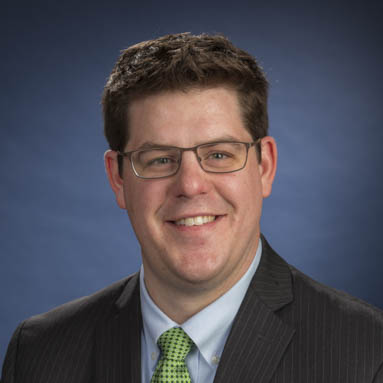Eric Young Develops New DNA Toolkit to Aid Synthetic Biology Research
Department(s):
Marketing CommunicationsWPI researcher Eric Young has developed a simple way to express genes across different bacterial species.

Eric Young
Young and Kevin Keating '23 (PhD) overcame a limitation in synthetic biology by designing a generalized collection of DNA “parts” that can be used with a number of bacterial species to assemble DNA sequences.
The collection, openCIDAR, was developed with the aid of automated liquid handling capability at WPI’s new Cell Engineering Research Equipment Suite (CERES), which was funded by the Massachusetts Life Sciences Center (MLSC).
“What we do in synthetic biology is treat DNA sequences like LEGO bricks—we define DNA parts and develop modular ways to put them together,” says Young, an assistant professor in the Department of Chemical Engineering. “That allows researchers to make many designs at once and automate construction of DNA. Up until now, however, researchers have been developing new parts sets for nearly every type of bacteria they would like to engineer. With openCIDAR, we can truly be genetic designers, not just for one organism, but for many organisms, and because of the CERES facility we can do it without pipetting at the bench.”

Young and Keating reported their development in “Systematic Part Transfer by Extending a Modular Toolkit to Diverse Bacteria,” a paper published in the American Chemical Society journal Synthetic Biology.
Bacteria that now have defined parts collections include Pseudomonas putida, which can remediate pollution in soil; Cupriavidus necator, which can produce commodity chemicals from carbon dioxide; and Komagataebacter nataicola, which produces cellulose, a biomaterial with biomedical applications. Young collaborates with Assistant Professor Natalie Farny to use P. putida to sense and remediate soil pollution, and with Associate Professor Jeannine Coburn, who uses cellulose to make wound dressings.
Young is not only changing how genetic engineering is done, he is focusing on workforce development, as well.
“Biofoundries such as CERES are key drivers of the future biomanufacturing economy because they enable fast, streamlined construction of strains,” Young says. “We need to get faster and smarter at designing organisms to solve problems, but we also need to scale up these technologies. That means training people to work in careers that will be shaped by biological engineering—from the research lab to the bioreactor.”
Young and his graduate, student Zekun Li, are teaching students about automated DNA assembly and the openCIDAR parts collection at a synthetic biology summer course at Cold Spring Harbor Laboratory in New York and in graduate laboratory courses at WPI.

My research is in the broad, interdisciplinary field of synthetic biology, which applies engineering principles to biology. Within this field, we apply chemical engineering tenets to reprogram the DNA of yeasts, bacteria, and fungi so their metabolism produces interesting molecules. By treating these cells as "chemical factories," we can approach and solve problems in biofuels, biomaterials, and biosensors from a chemical engineer's point of view.
Keep Up With WPI Research News
Want to learn more about Research at WPI? Subscribe to the monthly newsletter.